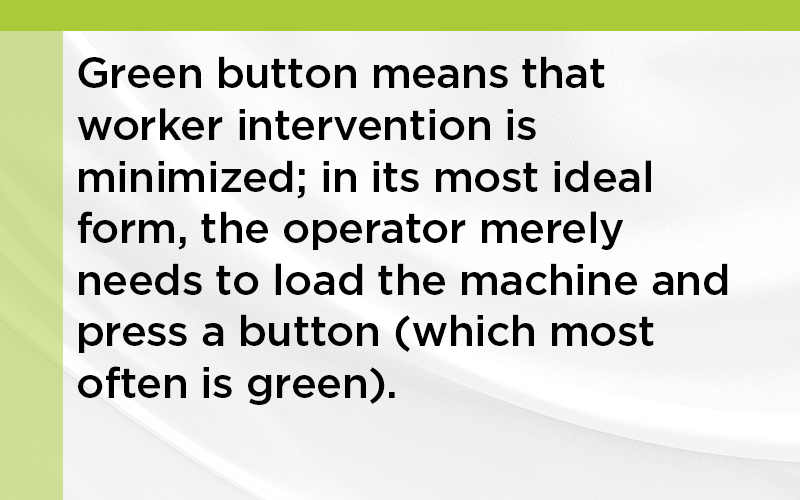
by Al Boese, Bindrite Dealers Association
Beginning in the mid-1990s, digital technology changed the world and the printing industry along with it. This was a revolution indeed, as the devices employed by printers – while improved over time – had remained substantially unchanged over centuries. The machines used by the printing industry, beginning with setting cold and hot type, the Gutenberg Letter Press and crude guillotine paper cutters were classically analog and performed yeoman-like service for five hundred years (give or take a few).
In the late 20th century, however, the digital revolution tore down everything within a couple of decades. Cold type setters in 1980 were working a Compugraphic phototypesetter in 1990 or not working at all. Darkroom film strippers in 1980 were learning color management software in 2000.
Most people date the beginning of this metamorphosis to the introduction of digital image setters, a disruptive technology that changed prepress forever. Because these devices could go directly from artwork file to press, they eliminated facilities, darkrooms, cameras and stripping.
In the late 20th century, prepress technology made the jump to imaging directly to plates already installed on the press – skipping the film stage altogether. This was the beginning of what I call the Green Button Revolution.
What is the green button revolution? Basically, it is the next stage of automation in digital printing, and it now is beginning to affect all phases of paper handling, binding, protecting and the other print finishing processes. Green button means that worker intervention is minimized; in its most ideal form, the operator merely needs to load the machine and press a button (which most often is green). The end product comes out the other end.
In the late 20th century, the green button revolution already was manifesting itself in other ways. Office photocopiers were increasingly deploying touchpad controls. Along the way, these machines were becoming multifunctional in ways that the old office mimeograph user could not have imagined. Options such as duplex printing, reduction or enlargement, print orientation, collating and stapling became standard. It all was integrated with and enabled by desktop publishing technology and distributed far and wide by networking systems. Simultaneously, electrostatic and inkjet printers propelled digital printing into the large format world.
But, where did this leave print finishing, the overlooked stepchild of the printing industry? Print finishing was an analog world from the beginning and has remained so almost without exception until a few years ago. The shining exception was the Fast Back Thermal Strip Binding Process developed and introduced by Powis Parker in the mid-1990s. That product was a glorious success owing to several factors, including aesthetics (the finished bound book looked great), operator simplicity, versatility and modern industrial design. It was a pioneer in the green button revolution.
It was not until early 2000 when the next green button print finishing machine came along – the ALM 3220, a fully automatic laminator. Designed by FujiPla of Japan and introduced by DryLam, the ALM 3220 changed the way the industry thought about lamination and began the onset of an ever growing parade of green button finishing equipment.
Supporting statistics
Speaking at the BindRite 2014 annual meeting, National Print Owners Association (NPOA) president John Stewart made a compelling case for more automation in post-print processes across the board. Stewart presented statistics derived from NPOA’s 2014-2015 Financial Benchmarking Study, which included such fundamentals as annual sales, cost of goods and payroll. Notable among the trends was Stewart’s conclusion that labor costs are rising significantly faster than other shop expenditures. A key chart showed labor expenditures as a percentage of all costs climbing from 24.3 percent in 1983 to 32.5 percent in 2011.
That leap establishes labor costs as the single greatest category of business expense, overtaking overhead as the greatest drag on profits. In fact, with overhead and cost of sales remaining relatively stable over the 30-year period, the uptick in labor costs comes almost directly out of owner’s compensation.
These findings account to no small degree for a surge in sales of automated finishing equipment. The deployment of green button technology generally results in immediate improvements in productivity. Time is saved because the user interface is intuitive and simple. Many standard jobs are pre-programmed, and custom work can be stored for future use. Job setup is simple, swift and precise. Machine operation during a job run is automatic, freeing an operator to prepare the material for the next job or other multitasking activity. Likewise, material is conserved because makeready essentially is eliminated, and a perfect result usually is achieved on the first sheet or book. Green button technology is alive and flourishing, with even more potential for the future.
Al Boese is executive director of the BindRite Dealers Association and can be reached at 847.283.0970 or al.boese@bindrite.com.

